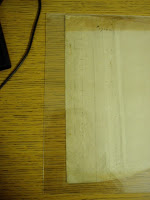Carmel recently went to India to attend a wedding and brought back a beautiful cotton sari. She asked me to make it up in the same style as her favorite summer shift dress.
Needless to say the dress looks better on Carmel than on my mannequin.

front view

back view























